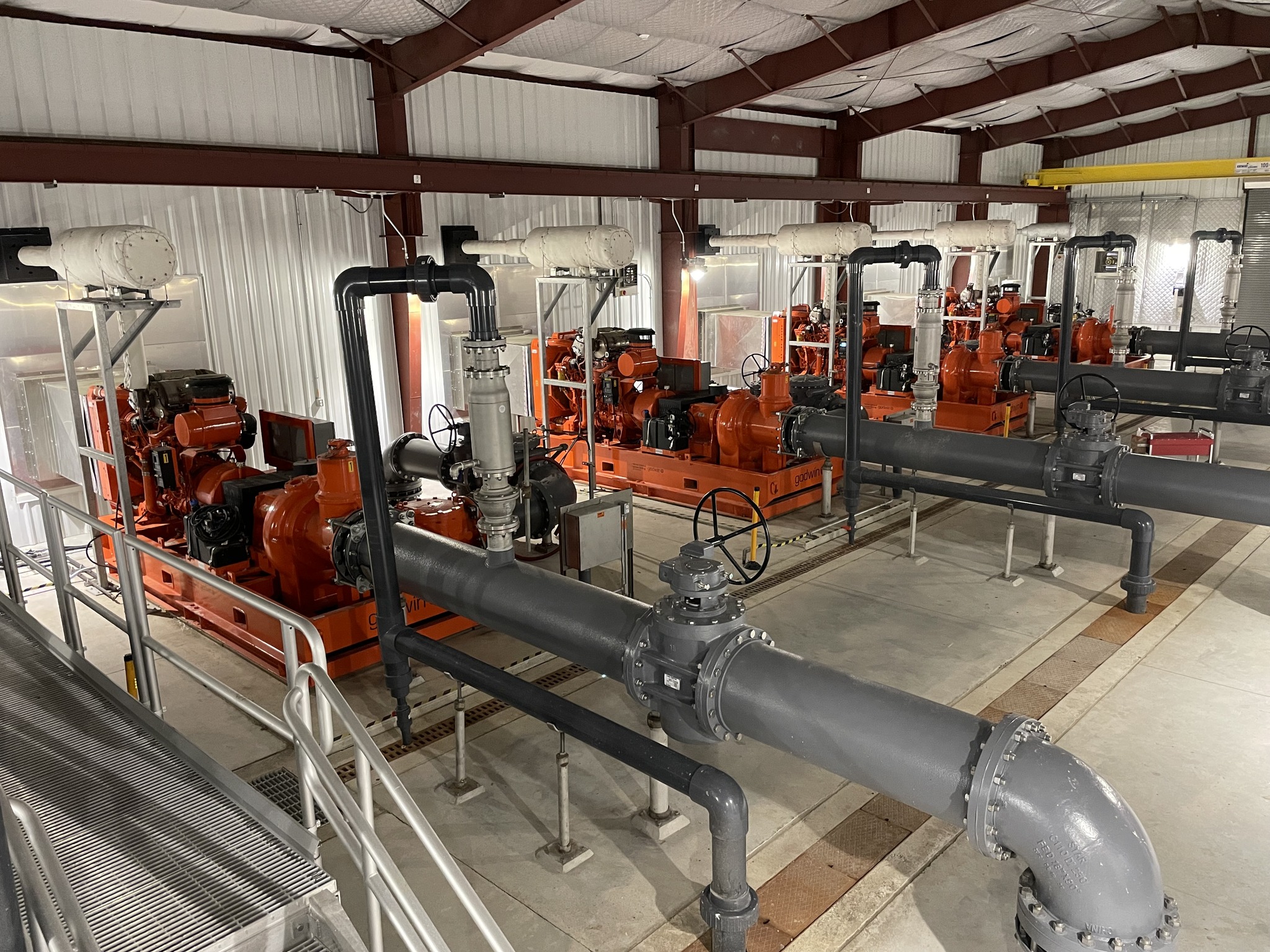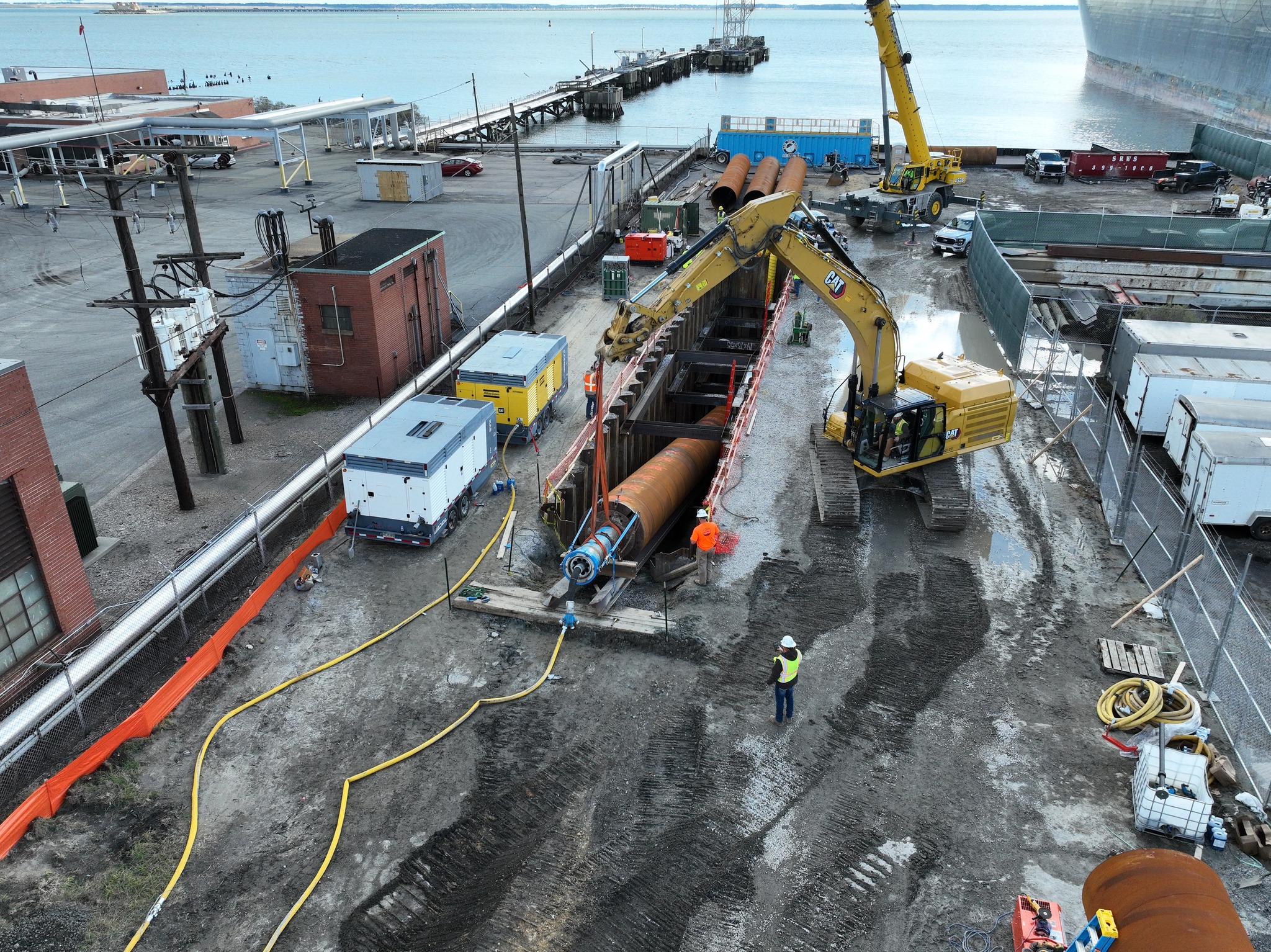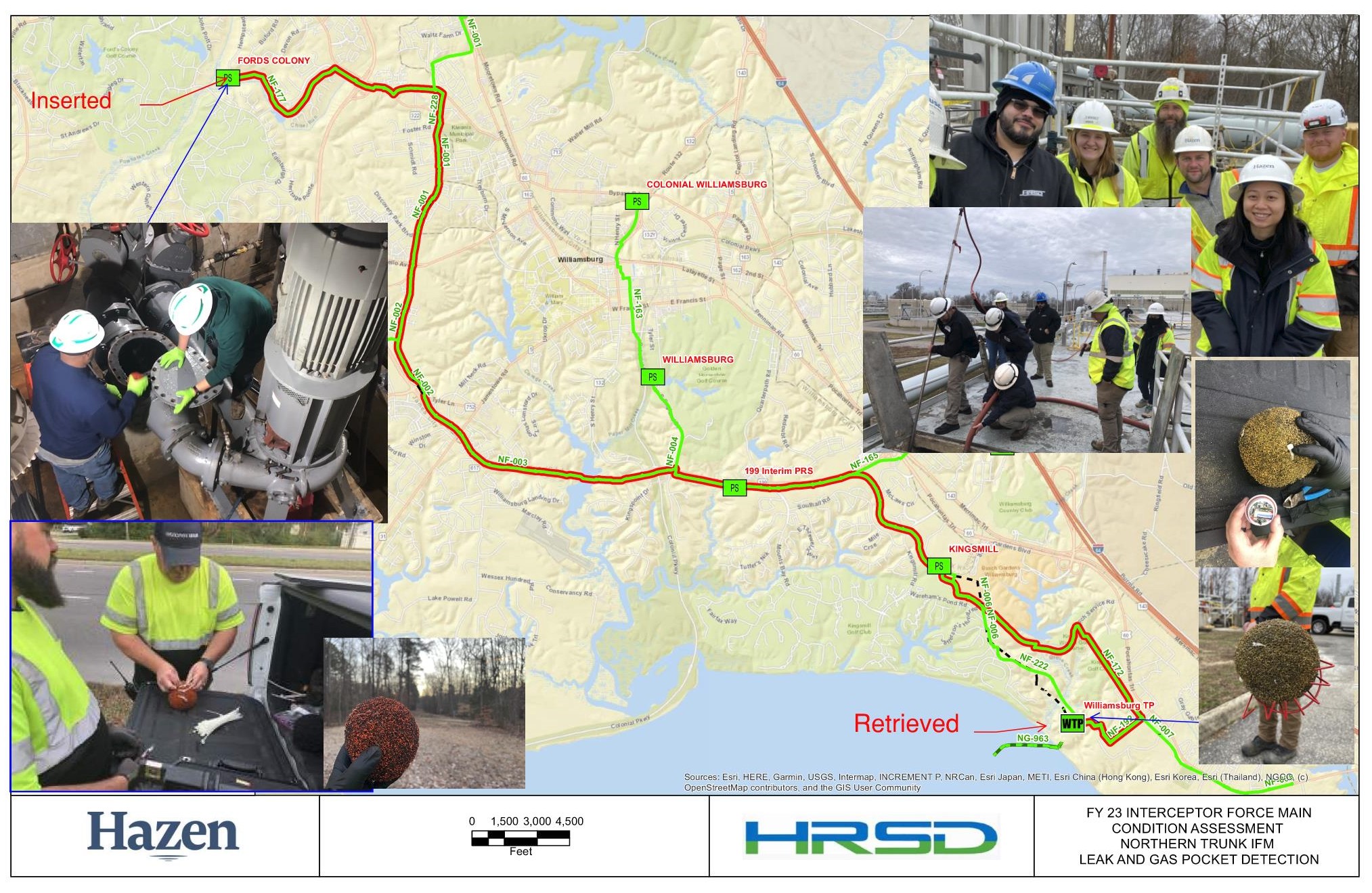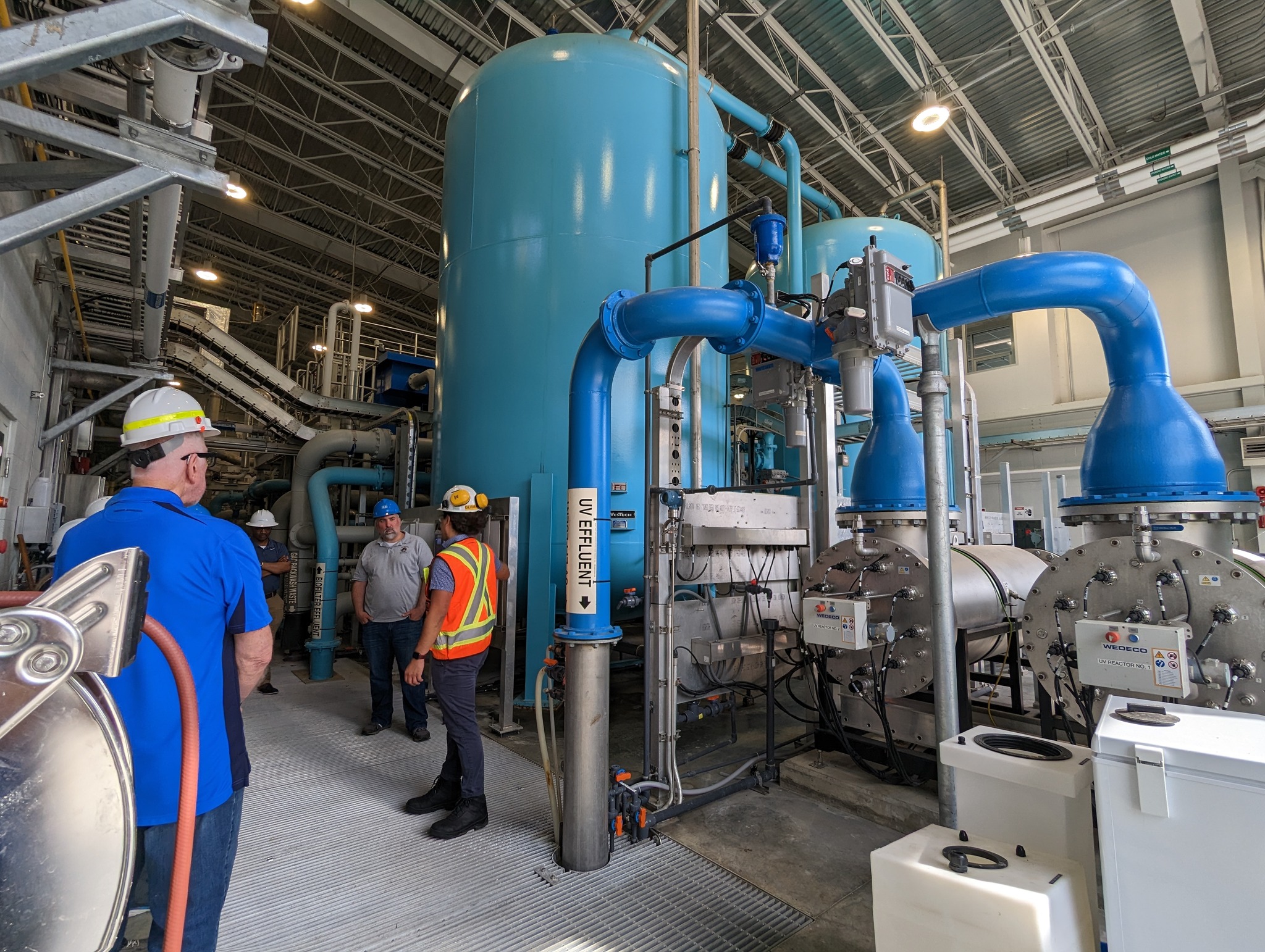Written by Lacie Wever, HRSD Community Education and Outreach Specialist Published on March 28, 2024
Every year HRSD celebrates Engineers week and the importance of Engineering in shaping the future. This year, Engineers Week was celebrated February 18 – 24, 2024. Engineering is the cornerstone of human progress, continually propelling us forward and creating innovative solutions to problems around the world. At HRSD, our Engineering Department is responsible for the planning, design, construction, and lifecycle monitoring and analysis of infrastructure assets to meet the near term needs and long term goals of HRSD.
Following the theme “Welcome to the Future”, here are 4 innovative HRSD Engineering projects shaping the future in Hampton Roads.
1. Elbow Road Pressure Reducing Station (PRS)
The Elbow Road PRS is being designed to help reduce sanitary sewer overflows into the Chesapeake Bay. This PRS is engineered to use pumps to control pressures in the sewer system. Engineers had to consider the best type of pumps needed for the system, the best size of pump, how large storms would impact the sewer system, and even the design/aesthetics so it can blend in with the surrounding area.

2. Boat Harbor Treatment Plant Conversion and Transmission
HRSD currently has 14 wastewater treatment plants in eastern Virginia and the Eastern Shore. One of these plants, our Boat Harbor Treatment Plant in Newport News is closing. HRSD is closing this plant to further reduce nutrients discharged into the James River, helping to support local water quality and Chesapeake Bay restoration efforts.
A new pumping station facility will be constructed at the Boat Harbor location and wastewater will be pumped through a pipe to HRSD’s Nansemond Treatment Plant in Suffolk. One of the most notable things about this project is that part of the pipe will be underwater!
From underground to underwater, here’s a peek at Engineer excellence beneath the surface!
You can find more information about this project here.

3. Condition Assessment Technologies
Lifecycle monitoring is a crucial component to maintaining wastewater infrastructure and reducing possible sanitary sewer overflows into the Chesapeake Bay. HRSD’s Condition Assessment Engineers utilize smart insertable technologies to identify gas pockets and pipeline anomalies in the Interceptor Force Main System.
The North Trunk Interceptor Force Main system, which conveys all the City of Williamsburg flow as well as most of the James City County flow to the Williamsburg Treatment Plant, was recently investigated.
Portions of this main are 50 years old! Using assessment technology called the Nautilus System, Engineers determine a risk score to help prioritize repairs needed in the infrastructure.

4. Using Granular Activated Carbon To Reduce PFAS in Water
Have you heard of per- and polyfluoroalkyl substance (PFAS)? PFAS is a man-made compound which has created water quality challenges facing the nation. To address this challenge, HRSD uses granular activated carbon (GAC) at our SWIFT Research Facility to manage PFAS in finished waters. It will also be used at future full-scale SWIFT Facilities.
As demand for GAC grows to meet regulatory developments around PFAS, HRSD Engineers have conducted a GAC reactivation study and cost-benefit analysis to understand the benefits or drawbacks of onsite GAC reactivation.
Check out these huge tanks at our SWIFT Research Center full of GAC. These tanks are a key component in cleaning our SWIFT Water to drinking water quality standards.

Through these projects, it is clear how important Engineers are to shaping the future in Hampton Roads with innovative water research, strategies, and technologies. Follow along on our social media for updates on each of these projects!